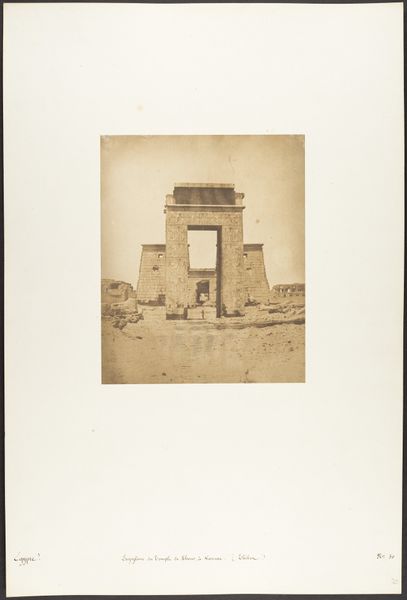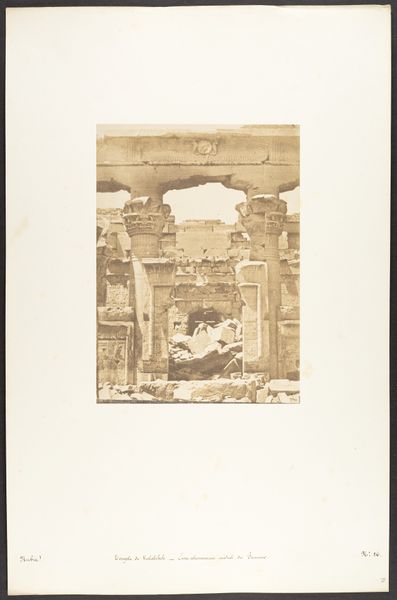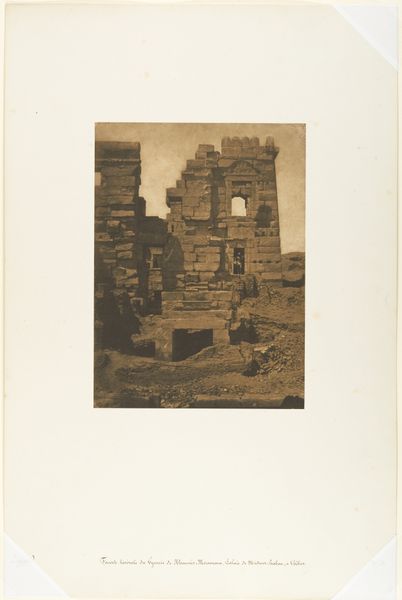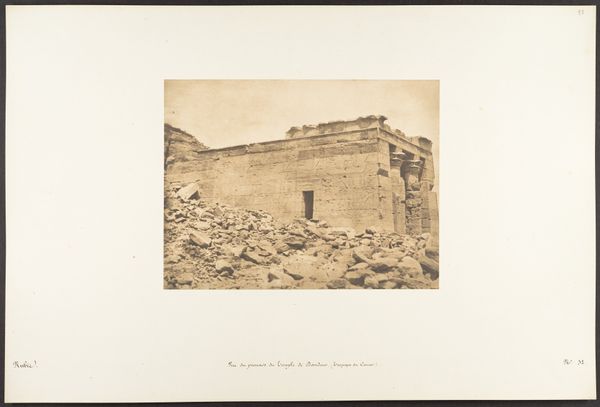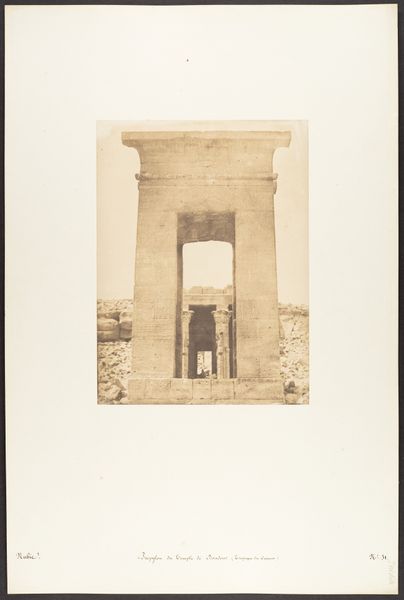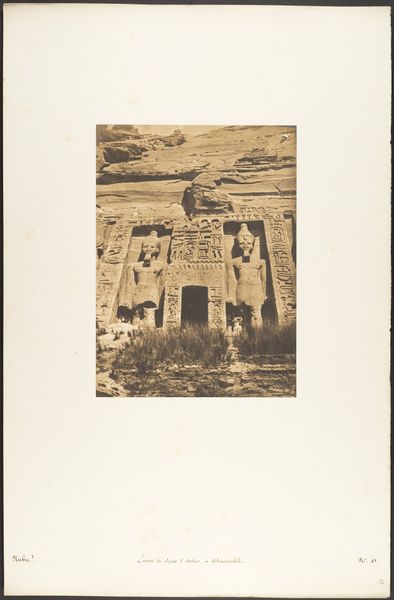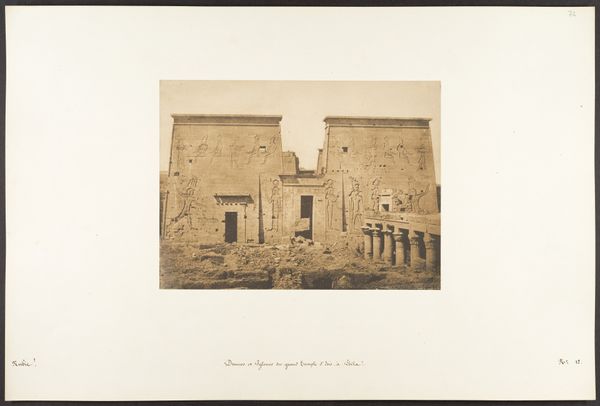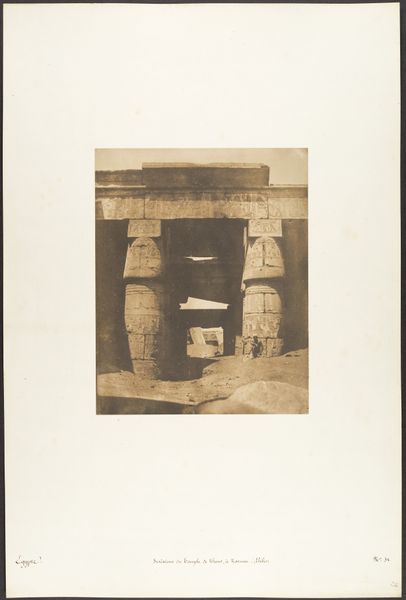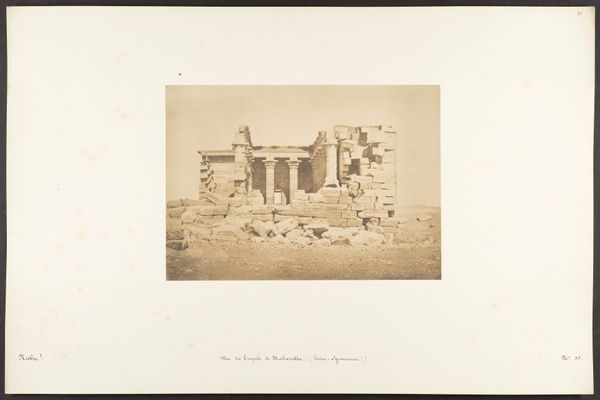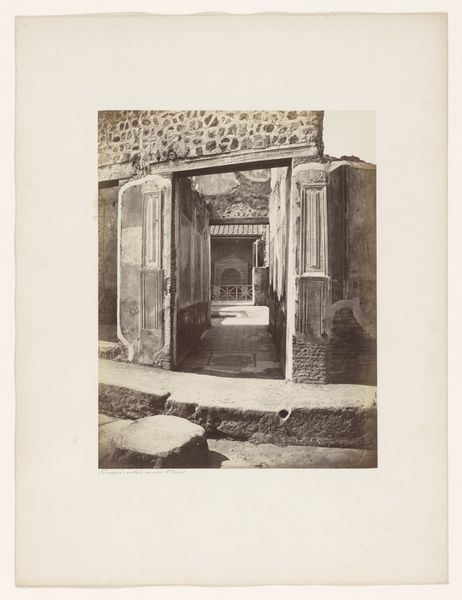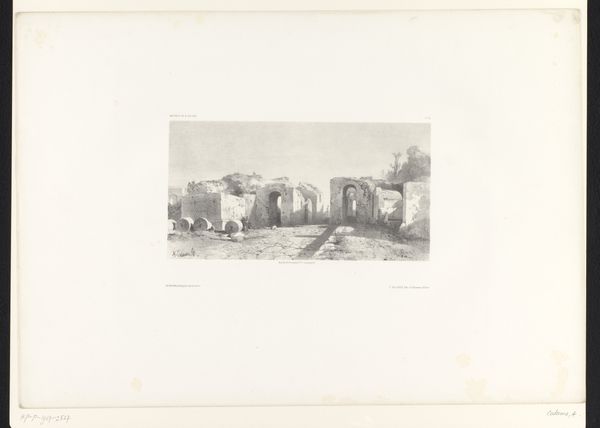
Propylées du Thoutmoséum, à Médinet-habou (Thèbes) 1849 - 1850
0:00
0:00
photography, architecture
#
ancient-egyptian-art
#
photography
#
ancient-mediterranean
#
arch
#
architecture
Dimensions: Image: 8 7/16 × 6 7/16 in. (21.4 × 16.4 cm) Mount: 12 5/16 × 18 11/16 in. (31.2 × 47.5 cm)
Copyright: Public Domain
This photograph, "Propylées du Thoutmoséum, à Médinet-habou", was taken in the mid-19th century by Maxime Du Camp, using the calotype process. This early photographic technique, using paper negatives, gives the image a soft, almost painterly quality, quite unlike the sharp precision we associate with photography today. Look closely, and you'll notice how the light interacts with the stone of the ancient structure. The calotype process is less about capturing every detail, and more about rendering the overall form and texture. It’s a chemical process, after all, with light-sensitive paper standing in for the artist’s hand. Consider the social context here: Du Camp was part of a wave of 19th-century European travelers, enabled by new technologies and colonial power dynamics. The image becomes a kind of artifact itself, a physical record of a moment in time, and of the artist's encounter with an ancient civilization. This photograph invites us to think about the labor of its making, but also the labor that went into the monumental architecture it depicts. It's a powerful reminder that every image, like every object, carries within it a complex history of materials, processes, and human endeavor.
Comments
No comments
Be the first to comment and join the conversation on the ultimate creative platform.

